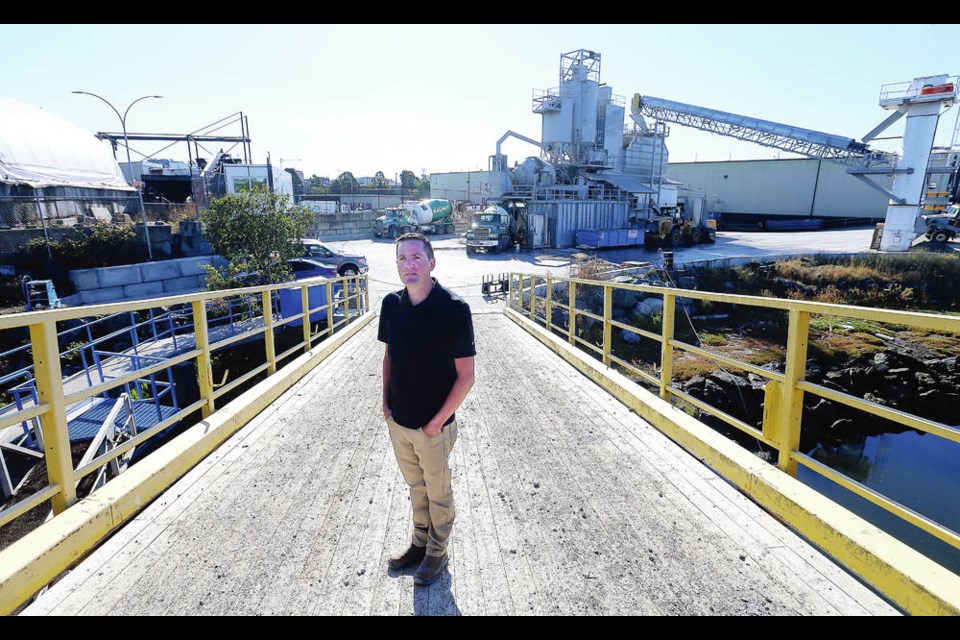Trio Ready-Mix has applied to the City of Victoria for a height variance to accommodate a new storage facility at its Bridge Street operation, which could help make the concrete plant one of the most environmentally friendly in North America.
The company, part of the Ralmax Group, is hoping to get approval to build a 31-metre-tall silo to store aggregate on site.
Stephen Hay, general manager of Trio, said the proposed silo will go a long way to improving the environmental performance of the site as it means they can bring material in by barge rather than truck.
“Marine industrial lands with access to deep water are a limited resource and we need to use these lands to a higher density,” he said, noting the proposed silo and other features will ensure the land continues to create sustainable employment.
Hay said to store aggregate in the traditional manner would require an acre and a half of land, while a silo allows them to store the same amount of material in less than 20 per cent of an acre. “It’s a big savings in land when there is a scarcity of marine industrial land in Victoria,” he said.
According to a sustainability assessment prepared for Trio by Victoria’s Synergy Enterprises, the new plant with a silo will “set the standard for low-impact concrete production, raising the bar and showcasing innovation in the industry.”
The report notes the new site with new cement making processes, and new means of bringing in material – 16 barge loads instead of more than 8,000 truck loads of material for example — will save 2,000 tonnes of carbon annually, while they also stand to save more than one million litres of water as a result of surface water reclamation processes and no longer having to wet down the stored aggregate.
“To have access to deep water and be able to bring raw materials in by barge is advantageous economically and environmentally, and this silo is the last step in making that a possibility,” Hay said.
The silo and elevator, which will be concealed by cladding that can be lit at night to improve the aesthetic of the site, are part of a massive investment in the new plant since Ralmax bought the company in 2014.
Ralmax founder and president Ian Maxwell avoided putting a pricetag on what he said has been a huge investment, but with a fleet of 19 new cement mixers now on the road, the new plant and a proposed silo, he acknowledged it’s in the eight-figure range.
Maxwell said the investment will take a long time to pay off, but he insists it will. “And it’s the right thing to do,” he said. “They’re probably 20 years ahead of what I envisioned. I can see [silos] eventually becoming the norm to store material as industrial real estate gets eaten up.”
Maxwell said using a smaller footprint and new processes sets a high bar for the competition, and while he said it’s unlikely to help them win more business right now, the fact they will be able to guarantee a consistent quality product will get them more work.
“The carbon footprint thing is a great catchphrase, but no one is going to pay us for it,” he said. “The benefit to us is we’re leading the way and our competitors will have to catch up.”
The perforated cladding around the silo and elevator will feature lighting that can change throughout the evening.
Hay said making it attractive is about showing that industrial land can co-exist beside office and residential development.
“Ian wants to show people what industrial lands can be — they don’t have to be an eyesore,” he said. “It’s a different way of doing things, a more expensive way of doing things but in the end it brings value to the community.”
aduffy@timescolonist.com



